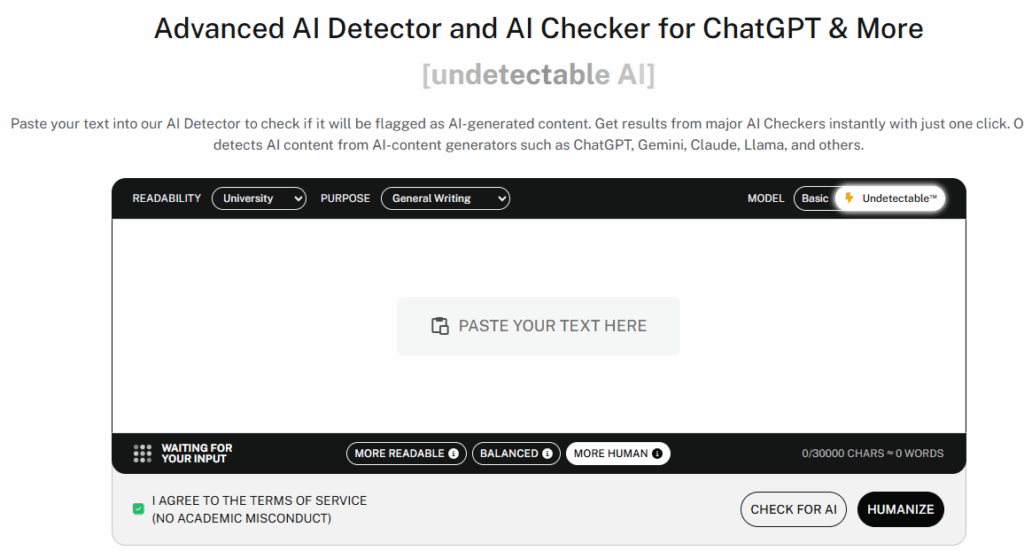- Joined
- Oct 12, 2023
- Posts
- 176
- Reaction score
- 57
Google’s human quality raters have been instructed to spot AI-generated content – and if they suspect a page is purely machine-written with no added value for user or originality, they’ll give it a lowest quality rating. Does this mean you should not use AI when planning and creating content for your website?
According to the new Google’s guidelines, the content can be rated low if all or almost all of it (that also relates to text, images, audio, videos, etc) is “copied, paraphrased, embedded, auto or AI generated, or reposted from other sources with little to no effort, little to no originality, and little to no added value for visitors to the website.”
Low-rated content has less chances to be featured high in Google’s search results – meaning you lose an opportunity to gain valuable organic traffic. In worst cases, if the content is plagiarised from other websites, it can lead to algorithm penalty, or a site disappearing from search results.
Does it mean that AI became the enemy of good SEO? Not necessarily. This is Google’s way to remind website owners that value for users comes first, and AI should be used responsibly in combination with human expertise to ensure authenticity.

Source: Google
Based on our experience, here are five areas where to use AI in creating compelling website content – and what to keep under human oversight – to stay out of Google’s penalty box.
What AI does well
Stuck at the blank-page stage? AI tools can quickly generate tons of topics, keywords, and questions to help with content ideation. If your business provides cloud security solutions, AI might suggest themes like “best practices for cloud access control,” “emerging threats in serverless environments,” or “how to build a zero-trust architecture.” If trained well on brand tone of voice – for example, when using ChatGPT’s “Projects” function – AI can also adjust the ideas to be more on-brand.
What to leave for humans
Human experts within your company will definitely be more aware of changing business priorities, new focus areas (for example, if you decide to launch a campaign targeted at backend developers) or market nuances. Defining a strategic direction is where the real-world expertise shines: based on it, a content strategist can instruct and train AI to provide more targeted ideas that align with business needs. In other words: let AI fuel the brainstorm but leave strategy to humans.

Source: Unsplash
What AI does well
Once you’ve picked a topic, try using AI to whip up a structured outline for a landing page. AI is good at breaking down content into subheadings and sections, generating meta tags optimized for keywords, and drafting a basic HTML tagging. That saves your human editors hours of formatting. Moreover, if you feed the AI some ‘meat’ – unique stats, specific case studies or the desired story angle – it can whip out a draft storyline like “Our client cut breach incidents by 40% with X – here’s 5 actionable steps to follow.” .
What to leave for humans
A generic outline is not enough to appeal to users coming to your website – they come for a story that only your brand can tell. Quite often, AI writing feels standardized and templated, lacking a ‘flavor’ of human storytelling crucial for an engaging piece of content. To make your story relatable, ask an experienced editor to go through an AI draft and weave in the brand narrative – and avoid coming up unnatural when checked via tools like Undetectable AI.

Source: Undetectable AI
What AI does well
AI can quickly process large reports or files with data and summarize key points. Need a quick rundown of “most common security incidents in April” or “frequent themes in customer support reports”? AI’s got you covered.
What to leave for humans
Numbers alone rarely move the needle – the real value for the user is created by a human expert who interprets those figures and turns them into a narrative. Add a quote or two from a subject matter expert to add flavour to the data. That interpretive layer is precisely what Google’s raters – and your readers – value as “expertise” and “trustworthiness.”
What AI does well
Generating personalized email subject lines, ad copies, or product descriptions is a perfect use case for AI tools. You can spin up A/B test groups and tailor messages and content based on user segment, past behavior, or geolocation.
What to leave for humans
When content is generated in bulk, it’s easy to slip on the tone of voice. Maybe an ad copy variation misuses a trademarked term, or a subject line reads awkwardly in some markets. A marketing specialist can spot potential issues with legal compliance or cultural nuances, keeping content on-brand.
What AI does well
Machine translation and automatic captioning have come a long way. You can instantly rework your blog posts and landing pages into half-a-dozen languages or auto-generate video captions to launch a website in a new market or language.
What to leave for humans
If you want to truly localize your content for new markets, you need to go beyond literal translation to avoid the content feeling stiff or misleading. Native speakers adjust idioms and humor, regional references, and even formatting conventions (dates, currency). Human translators with local expertise ensure your content resonates culturally.

Source: Unsplash
To sum up, Google’s new guidelines aren’t designed to punish AI-assisted writing. In fact, Google claims that they reward high-quality content, regardless of how it was produced. So the new guidelines are simply a call for a balanced approach to make sure a user discovers helpful content. By letting AI handle the legwork and empowering your content specialists to add the expertise, you’ll not only stay clear of Google’s demotion but create engaging website content.
Keen to enhance your website at scale? Visit it.com Domains blog and follow us on social media.
Continue reading at the it.com Domains blog...
According to the new Google’s guidelines, the content can be rated low if all or almost all of it (that also relates to text, images, audio, videos, etc) is “copied, paraphrased, embedded, auto or AI generated, or reposted from other sources with little to no effort, little to no originality, and little to no added value for visitors to the website.”
Low-rated content has less chances to be featured high in Google’s search results – meaning you lose an opportunity to gain valuable organic traffic. In worst cases, if the content is plagiarised from other websites, it can lead to algorithm penalty, or a site disappearing from search results.
Does it mean that AI became the enemy of good SEO? Not necessarily. This is Google’s way to remind website owners that value for users comes first, and AI should be used responsibly in combination with human expertise to ensure authenticity.

Source: Google
Based on our experience, here are five areas where to use AI in creating compelling website content – and what to keep under human oversight – to stay out of Google’s penalty box.
Spark new ideas… but choose your battles
What AI does well
Stuck at the blank-page stage? AI tools can quickly generate tons of topics, keywords, and questions to help with content ideation. If your business provides cloud security solutions, AI might suggest themes like “best practices for cloud access control,” “emerging threats in serverless environments,” or “how to build a zero-trust architecture.” If trained well on brand tone of voice – for example, when using ChatGPT’s “Projects” function – AI can also adjust the ideas to be more on-brand.
What to leave for humans
Human experts within your company will definitely be more aware of changing business priorities, new focus areas (for example, if you decide to launch a campaign targeted at backend developers) or market nuances. Defining a strategic direction is where the real-world expertise shines: based on it, a content strategist can instruct and train AI to provide more targeted ideas that align with business needs. In other words: let AI fuel the brainstorm but leave strategy to humans.

Source: Unsplash
Build the skeleton… then add the flavor
What AI does well
Once you’ve picked a topic, try using AI to whip up a structured outline for a landing page. AI is good at breaking down content into subheadings and sections, generating meta tags optimized for keywords, and drafting a basic HTML tagging. That saves your human editors hours of formatting. Moreover, if you feed the AI some ‘meat’ – unique stats, specific case studies or the desired story angle – it can whip out a draft storyline like “Our client cut breach incidents by 40% with X – here’s 5 actionable steps to follow.” .
What to leave for humans
A generic outline is not enough to appeal to users coming to your website – they come for a story that only your brand can tell. Quite often, AI writing feels standardized and templated, lacking a ‘flavor’ of human storytelling crucial for an engaging piece of content. To make your story relatable, ask an experienced editor to go through an AI draft and weave in the brand narrative – and avoid coming up unnatural when checked via tools like Undetectable AI.

Source: Undetectable AI
Crunch numbers… but tell the story
What AI does well
AI can quickly process large reports or files with data and summarize key points. Need a quick rundown of “most common security incidents in April” or “frequent themes in customer support reports”? AI’s got you covered.
What to leave for humans
Numbers alone rarely move the needle – the real value for the user is created by a human expert who interprets those figures and turns them into a narrative. Add a quote or two from a subject matter expert to add flavour to the data. That interpretive layer is precisely what Google’s raters – and your readers – value as “expertise” and “trustworthiness.”
Personalize at scale… but don’t compromise on quality
What AI does well
Generating personalized email subject lines, ad copies, or product descriptions is a perfect use case for AI tools. You can spin up A/B test groups and tailor messages and content based on user segment, past behavior, or geolocation.
What to leave for humans
When content is generated in bulk, it’s easy to slip on the tone of voice. Maybe an ad copy variation misuses a trademarked term, or a subject line reads awkwardly in some markets. A marketing specialist can spot potential issues with legal compliance or cultural nuances, keeping content on-brand.
Translate & caption… but localize with care
What AI does well
Machine translation and automatic captioning have come a long way. You can instantly rework your blog posts and landing pages into half-a-dozen languages or auto-generate video captions to launch a website in a new market or language.
What to leave for humans
If you want to truly localize your content for new markets, you need to go beyond literal translation to avoid the content feeling stiff or misleading. Native speakers adjust idioms and humor, regional references, and even formatting conventions (dates, currency). Human translators with local expertise ensure your content resonates culturally.

Source: Unsplash
How to stay on Google’s good side
- Even if an AI draft feels flawless, fact-check claims, adjust it for your audience, and weave in your brand’s voice.
- Make your content stand out with case studies, customer reviews, expert quotes, survey data, or team interviews – anything that can show your real-word expertise.
- A note like “Researched with AI and reviewed by our experts” helps build trust, especially if you work in industries like legal or healthcare. In fact, platforms like Apple News and Meta have specific guidelines to label AI-generated content to avoid misleading users.
- Google’s raters look for helpful content – the one created when a brand has something to say beyond what’s already been said online. Before you publish, ask: “Will this add a new perspective, fresh data or information that users don’t know yet?” If the answer is no, rethink or cut it.
- Keep track of performance metrics and refine both your AI prompts and your content creation processes. If a page underperforms, revise, and republish.
To sum up, Google’s new guidelines aren’t designed to punish AI-assisted writing. In fact, Google claims that they reward high-quality content, regardless of how it was produced. So the new guidelines are simply a call for a balanced approach to make sure a user discovers helpful content. By letting AI handle the legwork and empowering your content specialists to add the expertise, you’ll not only stay clear of Google’s demotion but create engaging website content.
Keen to enhance your website at scale? Visit it.com Domains blog and follow us on social media.
Continue reading at the it.com Domains blog...




